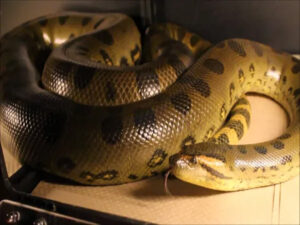Discovered two decades ago in the Beni region of Bolivia, it was presented to science as Eunectes beniensis.
First erroneously regarded as a hybrid between the big Green Anaconda and the smaller Yellow or Paraguay Anaconda, the morphological analysis strongly suggested its status as an own, independent species, the fourth of its genus and growing at least up to 4 m in length.
Two decades later, the team guided by David Tarknishvili succeeded in extracting DNA from the old tissue samples to substantiate and verify the specific genetic status of the Beni Anaconda.
Nowadays, the discovery of a new species is for the taxonomically working zoologist not very unusual, as long as these new species are small and inconspicuous.
In contrast, the discovery of large, conspicuous new vertebrate species is much rarer and attracts the attention not only of specialists, but also of the broader public.
pll/ro/lpn










